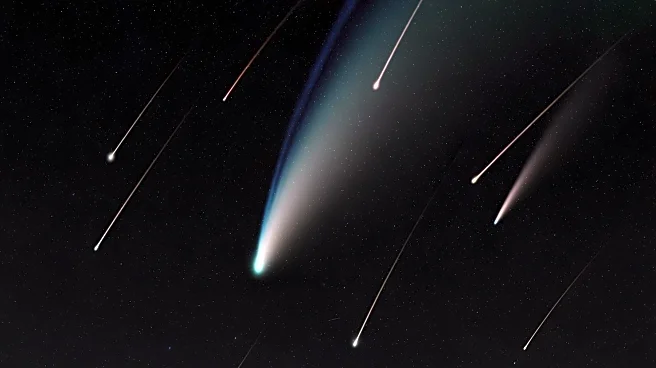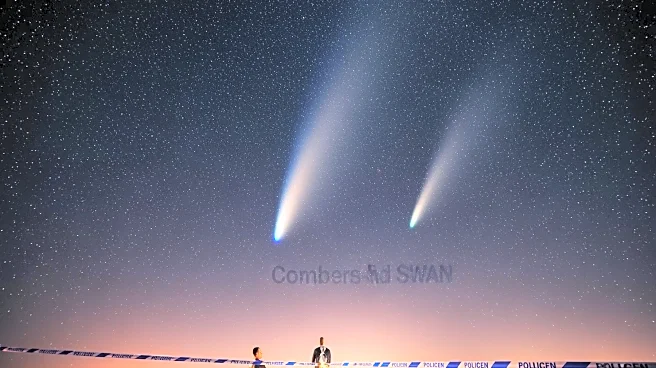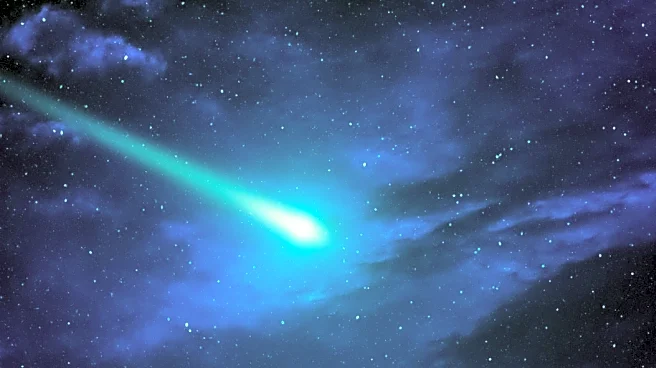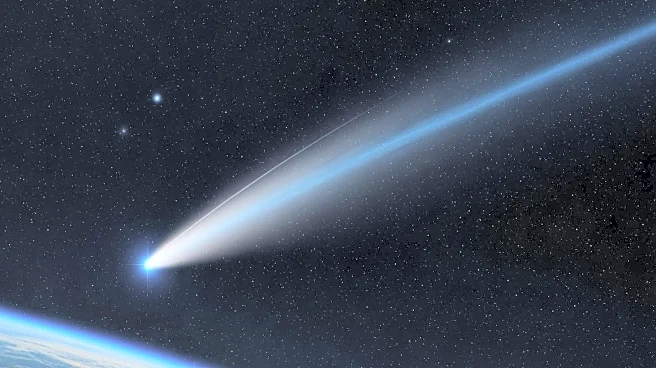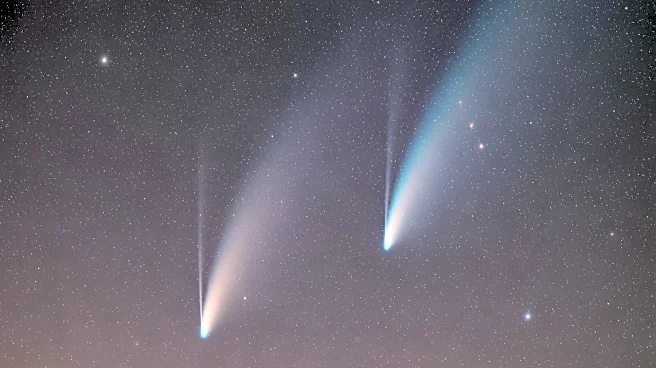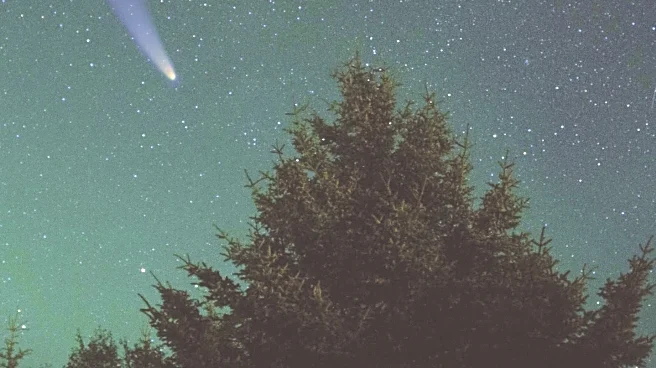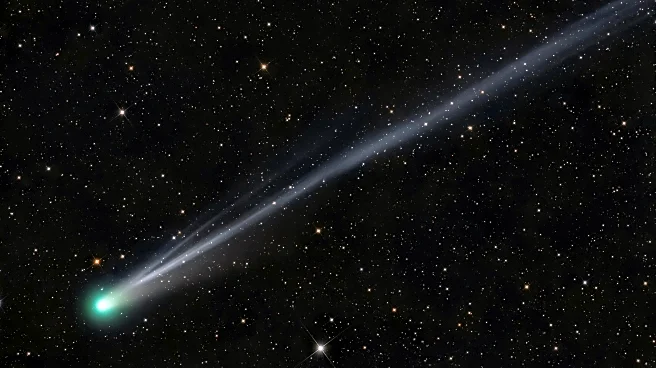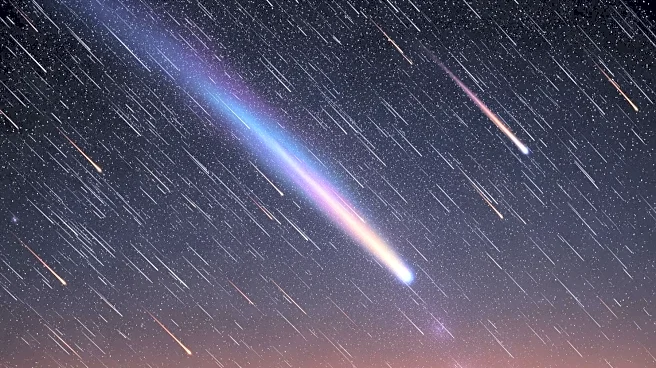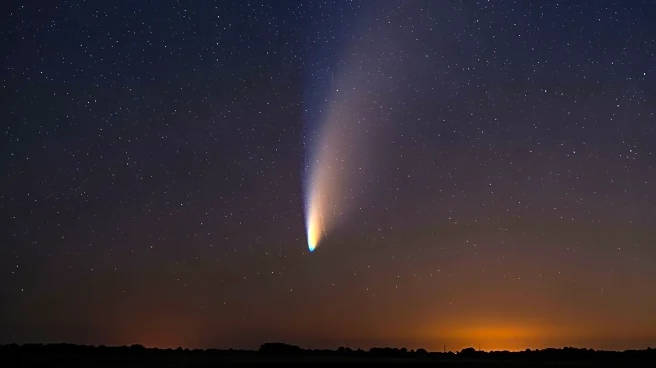What's Happening?
Two rare comets, C/2025 A6 (Lemmon) and C/2025 R2 (SWAN), are set to become visible in the night sky this October, providing a unique opportunity for skywatchers. Comet Lemmon, discovered by the Mount
Lemmon Survey in Arizona, and Comet SWAN, identified by Ukrainian amateur astronomer Vladimir Bezugly, will reach their peak visibility on October 20 and 21, respectively. These comets, characterized by their green gaseous appearance and streaming tails, will be visible to the naked eye, although Comet SWAN may appear fainter. The comets are non-periodic, meaning they have highly elliptical orbits and will not return for hundreds of years, with SWAN expected back in 650 to 700 years and Lemmon in 1,300 years. The best viewing times are during the predawn hours or after sunset, especially in areas with minimal light pollution.
Why It's Important?
The appearance of Comets Lemmon and SWAN presents a rare astronomical event, as such comets are not frequently visible from Earth. This event is significant for both amateur and professional astronomers, offering a chance to observe and study these celestial bodies. The visibility of these comets also coincides with the Orionid meteor shower, enhancing the stargazing experience. For the general public, this event provides an opportunity to engage with astronomy and appreciate the wonders of the universe. The rarity of these comets' appearances underscores the importance of seizing the opportunity to observe them, as they will not return for many generations.
What's Next?
As the comets approach their peak visibility, astronomers and enthusiasts are preparing to observe and document the event. Observatories and astronomy clubs may organize viewing events, providing telescopes and guidance for the public. Additionally, the Orionid meteor shower will continue to be visible through early November, offering further opportunities for skywatching. The next significant celestial event, the Beaver Moon, a supermoon, is scheduled for November 5, continuing the series of astronomical phenomena this fall.
Beyond the Headlines
The discovery and observation of comets like Lemmon and SWAN contribute to our understanding of the solar system's dynamics and the composition of these icy bodies. Such events also highlight the role of amateur astronomers in contributing to scientific discoveries, as demonstrated by the identification of Comet SWAN. The cultural and educational impact of these celestial events can inspire interest in science and technology, encouraging future generations to explore careers in these fields.
